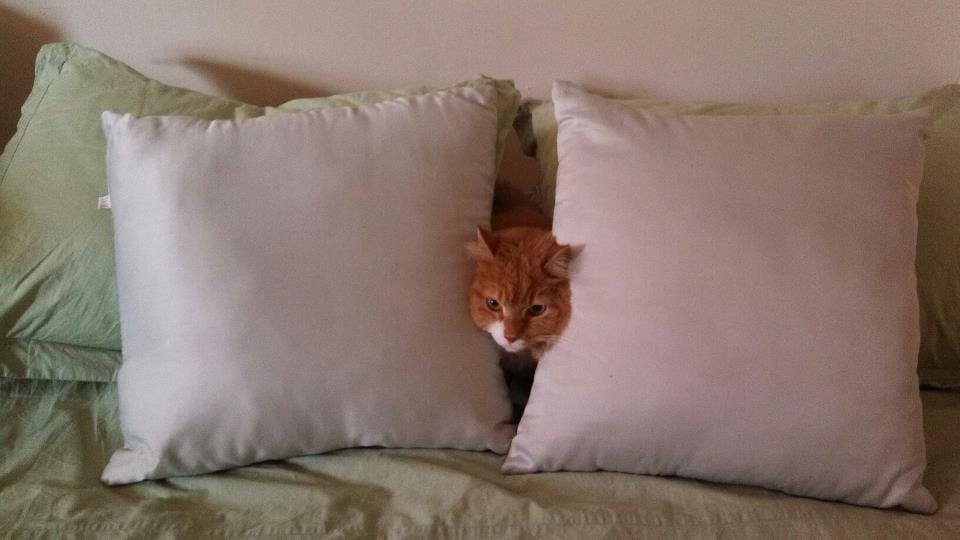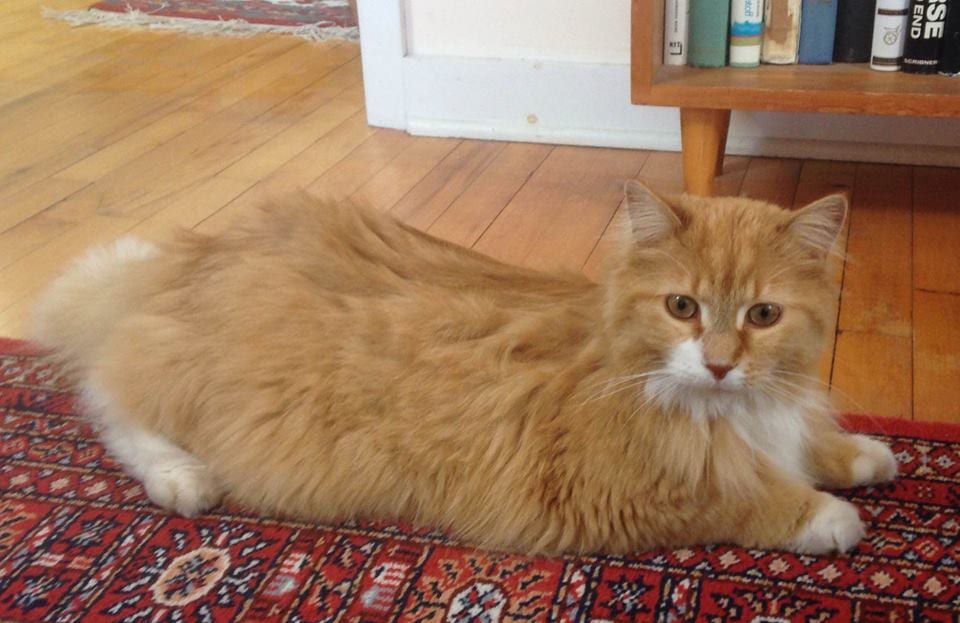I was thinking about people who work in very traditional or bureaucratic organizations. I was thinking about how they can develop the skill to be more innovative and entrepreneurial. It is a different world to be given the “right way” to do something, and to do it again and again like a modern factory worker vs. having to create or figure out “many ways” to do something that hasn’t been done before, and learn how to do it.
I live near a zoo and like to take a quick walk through occasionally. I noticed a lot of the animals have their daily routines. One routine the lions have is waiting at the end of their space at a certain time. Then, the zookeeper brings food for them at that spot. They do this each day. Then, they may lay down in a shady spot in their enclosure waiting until the next time they get food.
Another cat I know is Sage. When I met my wife, she had a small apartment in Chicago. Sage stayed in this apartment. He received his food in the same place each day. He didn’t go outside. He might have been afraid of outside.

Living in enclosures and apartments isn’t natural for cats. The “modern factory work” we do in our everyday jobs isn’t natural for humans. What is more natural for both cats and humans is being in “the wild.” We thrive in the world of innovation and entrepreneurship where we have to hunt and gather to get what we need to survive and thrive. Our lives aren’t laid out for us every 2 weeks and with such predictable consistency that we can rely on our zookeeper. What if a big change happened and we had to live in the wild, respond to change, or innovate? Could we do it? Do we have the skill? Have we trained ourselves? Sage the cat did in his environment.
My wife brought Sage to her Dad’s in the Upper Peninsula of Michigan where there was a yard that Sage could roam in. The first time Sage had the opportunity to expand his territory and go outside he was afraid, he tiptoed out and ran back in.
The next time we visited, Sage was in the neighbor’s yard under a tree. He had gone a little further. We also saw him “training.” He jumped, spun, and swatted at something imaginary. It was like shadow boxing.
The next time we visited, we saw Sage smack some grasshoppers and munch on them. We saw him in the evening jump towards a light and grab a moth out of the air to munch on also.
The next time we visited, we called Sage’s name and he came over from the neighbor’s yard with a chipmunk in his mouth.

Sage the cat may now be ready for a more natural or “wild” environment. He had to train. He had to take it stage by stage and level by level. He could do all of this within his own space of a backyard.
You can start where you are at. If you are part of an organization, can you train yourself to innovate and be more entrepreneurial? Can you become a part of a program in your organization? Can you create your own innovation project where you work on a challenge important to you? Can you pitch an idea to your boss, get it shot down, and then pitch another, and another? Can you form your own innovation group, or start your own innovation competition at your organization? Can you create your own business on the side in just one hour a week to start flexing and training your entrepreneurial muscle?
Change is happening rapidly and so are disruptions. You can start now developing your skill to respond to the change and disruptions with innovations on your own. You may want to have a positive and innovative future for yourself and your organization, but visualizing isn’t enough. You must go into training. You must develop the skill, and work towards strengthening your innovation muscles.
Like Sage the cat, how can you start to train yourself to be more innovative and entrepreneurial in stages starting in the place you are at?
What could stage 1 be for you? Sage the cat tiptoed into the yard.
What could stage 2 be for you? Sage the cat did some movements – imaginary swatting.
What could stage 3 be for you? Sage the cat swatted some bugs and ate them.
What could stage 4 be for you? Sage the cat held a chipmunk.
What could you be able to do if you’d advanced through these stages? What would training yourself to advance to a higher level as an innovator be like?
Oh, by the way, what have you learned about work or life from a cat? Let us know in the comments!
Which skills should you focus on developing?
You’ve spent years and will probably continue to invest time in developing your job skills that relate to the specifics of your profession. Because of the changing nature of work and organizations, prominent research reports state the skills that are in highest demand but shortest supply in professionals are softer skills of creativity, problem-solving, communication, collaboration, and strategic thinking….innovation skills. Could you use the Sage the cat step by step and stage by stage approach to develop these important skills for yourself? You could benefit from a system or expert guide. We have a variety of online innovation courses (and even an innovative certificate program) that guide you through your own personal innovation challenge to develop your skills and create something of value. The program makes it practical for a purpose you’d like to work on, and it can get you started on your own innovation project that will help you to engage these critical skills needed most for our changing future.
With the rapid waves of change, new technologies, new problems, and new opportunities, professionals need to develop their soft skills (especially innovation skills) in addition to the technical skills specific to their field. This is critical for our changing world. This can be done through learning new methods and ideally starting an innovation project to do so for the benefit of your own learning and the changing future of your organization and your field or industry. Here is a video sharing more about the skills in greatest need, how they fit together, and how you might develop them.
